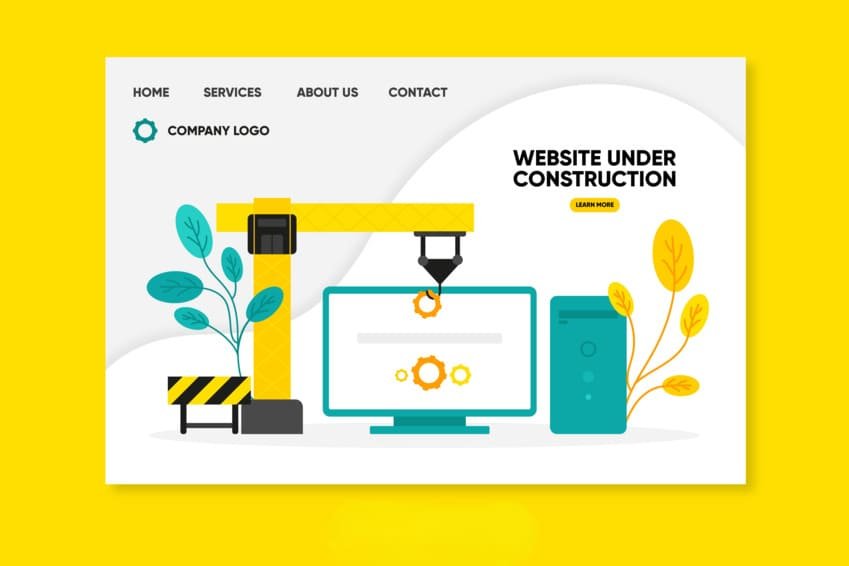Imagine spending thousands of dollars on a beautiful, high-performing website, only to watch it slowly deteriorate over time. Pages start loading slower, security vulnerabilities emerge, and eventually, your site becomes a liability instead of an asset. This scenario plays out for countless businesses every day, and it’s entirely preventable.
Website maintenance isn’t glamorous. It doesn’t generate the excitement of a new design or the immediate gratification of a marketing campaign. But it’s arguably one of the most important investments you can make in your digital presence. The cost of neglecting your website far exceeds the cost of maintaining it properly.
In this comprehensive guide, we’ll explore the real risks of website neglect, the tangible benefits of regular maintenance, and how to protect your digital investment for long-term success.
The True Cost of Website Neglect
Security Breaches: The Ultimate Business Nightmare
Every day, over 30,000 websites are hacked. The average cost of a data breach for small businesses is $2.98 million, and 60% of small companies go out of business within six months of a cyber attack. These aren’t just statistics—they represent real businesses that failed to prioritize website security.
Common security vulnerabilities include:
Outdated software creates entry points for hackers. WordPress, plugins, and themes release security updates regularly, and failing to install them leaves your site vulnerable. Hackers actively scan the internet for sites running outdated software, making unpatched websites easy targets.
Weak passwords and user permissions provide another common attack vector. Many business owners use simple passwords or give too many people administrative access to their websites. Each additional user with high-level permissions increases your security risk exponentially.
Malware infections can happen silently, operating in the background while stealing customer data or using your server resources for illegal activities. By the time you notice something is wrong, significant damage may already be done to your reputation and customer trust.
Performance Degradation: The Silent Revenue Killer
Website speed directly impacts your bottom line. A one-second delay in page load time can reduce conversions by 7%, and 40% of visitors will abandon a site that takes more than three seconds to load. Over time, unmaintained websites accumulate digital debris that slows them down significantly.
Performance issues compound over time:
Database bloat occurs as your website accumulates unnecessary data. Old revisions, spam comments, and unused media files create database inefficiencies that slow down every page load. What starts as a minor delay becomes a major user experience problem.
Outdated code and plugins often contain inefficiencies that modern versions have optimized. Running old software means missing out on performance improvements that could significantly speed up your site.
Broken links and missing images create poor user experiences and hurt your search engine rankings. Search engines penalize sites with technical issues, reducing your visibility in search results and costing you potential customers.
SEO Penalties: Losing Your Digital Visibility
Search engines favor websites that are well-maintained, secure, and fast-loading. Neglected websites often suffer from technical SEO issues that hurt their search rankings, making them harder for potential customers to find.
SEO consequences of poor maintenance:
Google actively penalizes websites with security issues, broken functionality, or poor user experiences. A single security breach can result in your site being blacklisted from search results entirely, devastating your organic traffic overnight.
Technical errors accumulate over time, creating crawl issues that prevent search engines from properly indexing your content. Broken internal links, missing meta tags, and slow loading times all contribute to declining search visibility.
Mobile compatibility issues become more pronounced as web standards evolve. Websites that aren’t regularly updated often develop mobile usability problems that hurt their search rankings, especially since Google uses mobile-first indexing.
The Business Impact: Real Numbers, Real Consequences
Revenue Loss from Downtime
Website downtime costs businesses an average of $5,600 per minute. For e-commerce sites, the impact is even more severe, with some businesses losing thousands of dollars for every hour their site is offline.
Consider a small e-commerce business generating $500,000 annually through their website. If poor maintenance leads to just four hours of downtime per year, that’s potentially $228 in lost revenue per hour, or over $900 in direct sales impact. This doesn’t account for the long-term damage to customer trust and brand reputation.
Customer Trust and Brand Reputation
Your website is often the first impression customers have of your business. A slow, broken, or compromised website immediately undermines confidence in your brand. Customers who encounter problems on your site are unlikely to return, and they may share their negative experiences with others.
Trust indicators that maintenance protects:
Professional appearance and functionality signal that you care about quality and attention to detail. Customers assume that businesses that maintain their websites well will also maintain high standards in their products and services.
Security and privacy protection are increasingly important to consumers. A single security breach can destroy years of reputation building and customer trust. The cost of rebuilding that trust far exceeds the cost of preventing the breach through proper maintenance.
Reliable performance creates positive user experiences that encourage repeat visits and referrals. Customers remember websites that work well and are more likely to recommend businesses with professional, well-functioning sites.
Essential Website Maintenance Tasks
Security Updates and Monitoring
Regular security maintenance forms the foundation of website protection. This involves systematically updating all software components and monitoring for potential threats.
Core security maintenance includes:
Software updates should be applied promptly but carefully. WordPress core, themes, and plugins all require regular updates to patch security vulnerabilities. However, updates should be tested in a staging environment first to ensure they don’t break existing functionality.
Security monitoring involves continuous scanning for malware, suspicious activity, and potential vulnerabilities. Automated security tools can detect threats early, often before they cause significant damage.
Backup management ensures you can quickly recover from any security incident or technical failure. Regular, tested backups stored in multiple locations provide insurance against data loss and enable rapid site restoration when needed.
Performance Optimization
Website performance requires ongoing attention to maintain optimal speed and user experience. Performance optimization involves both technical improvements and content management.
Key performance maintenance tasks:
Database optimization removes unnecessary data and reorganizes information for faster access. Regular database cleaning can significantly improve page load times, especially for content-heavy websites.
Image optimization ensures visual content loads quickly without sacrificing quality. New compression techniques and file formats emerge regularly, and maintaining optimal image performance requires ongoing attention.
Caching configuration helps serve content more efficiently to visitors. Cache settings need regular review and adjustment as your website content and traffic patterns change.
Content and Functionality Updates
Keeping your website content fresh and functional requires regular review and updates. This maintenance ensures your site continues to serve your business goals effectively.
Content maintenance priorities:
Information accuracy becomes increasingly important as your business evolves. Outdated contact information, discontinued products, or obsolete service descriptions can confuse customers and hurt your credibility.
Functionality testing ensures all features work as intended. Contact forms, shopping carts, and interactive elements need regular testing to catch problems before customers encounter them.
Content freshness signals to search engines that your website is actively maintained and relevant. Regular content updates, whether through blog posts or page revisions, support your SEO efforts and keep visitors engaged.
The ROI of Professional Maintenance
Preventing Costly Emergencies
Regular maintenance prevents small issues from becoming expensive emergencies. The cost of fixing a hacked website can range from hundreds to thousands of dollars, not including lost revenue and reputation damage. Professional maintenance typically costs a fraction of emergency repairs.
Maintenance vs. emergency costs:
Preventive security measures cost significantly less than breach recovery. A monthly maintenance plan might cost $100-300, while recovering from a security breach can cost $5,000-15,000 or more, depending on the severity and duration of the incident.
Performance optimization through regular maintenance prevents the need for expensive emergency fixes when your site becomes too slow to use effectively. Gradual performance improvements are much more cost-effective than emergency performance overhauls.
Regular backups and monitoring prevent data loss scenarios that could require expensive data recovery services or complete site rebuilds. The peace of mind alone justifies the investment in professional maintenance.
Improved Search Engine Rankings
Well-maintained websites consistently outperform neglected sites in search engine rankings. The SEO benefits of regular maintenance compound over time, leading to increased organic traffic and higher conversion rates.
SEO benefits of maintenance:
Technical SEO improvements through regular maintenance help search engines crawl and index your site more effectively. This leads to better visibility for your target keywords and increased organic traffic.
Site speed improvements from performance maintenance directly impact search rankings. Google considers page speed a ranking factor, and faster sites generally rank higher than slower competitors.
Security and reliability signals help search engines trust your website. Sites with good maintenance records are less likely to be penalized for technical issues or security problems.
Enhanced User Experience and Conversions
Regular maintenance ensures your website continues to provide excellent user experiences that drive conversions. Small improvements in site performance and functionality can lead to significant increases in customer engagement and sales.
User experience benefits:
Faster loading times reduce bounce rates and increase the likelihood that visitors will explore your site and take desired actions. Even small improvements in speed can lead to measurable increases in conversion rates.
Reliable functionality ensures that customers can complete purchases, submit forms, and access information without frustration. Every technical problem you prevent through maintenance is a potential lost sale you’ve saved.
Mobile optimization through regular maintenance ensures your site works well on all devices. With mobile traffic continuing to grow, maintaining excellent mobile performance is crucial for business success.
Building a Maintenance Strategy
Choosing Between DIY and Professional Maintenance
Many business owners wonder whether they should handle website maintenance themselves or hire professionals. The answer depends on your technical expertise, available time, and the complexity of your website.
DIY maintenance considerations:
Technical knowledge requirements vary depending on your website platform and complexity. Basic WordPress maintenance might be manageable for tech-savvy business owners, but complex e-commerce sites typically require professional expertise.
Time investment for proper maintenance is significant. Effective maintenance requires regular attention and can’t be done sporadically. Business owners often underestimate the time required and end up neglecting important tasks.
Risk tolerance plays a crucial role in this decision. Mistakes during DIY maintenance can cause significant problems, including site downtime, data loss, or security vulnerabilities. Professional maintenance providers have the expertise and insurance to handle these risks appropriately.
What to Look for in a Maintenance Provider
If you decide to hire professional maintenance services, choosing the right provider is crucial for protecting your investment and ensuring reliable service.
Key qualities in maintenance providers:
Technical expertise should be demonstrated through certifications, case studies, and client testimonials. Look for providers who specialize in your website platform and understand your industry’s specific requirements.
Communication and reporting practices ensure you stay informed about your website’s health and any issues that arise. Good maintenance providers offer regular reports and proactive communication about potential problems.
Response time guarantees provide assurance that critical issues will be addressed quickly. Look for providers who offer specific response time commitments for different types of issues.
Service scope should align with your website’s needs. Some providers focus primarily on security, while others offer comprehensive maintenance including performance optimization, content updates, and SEO monitoring.
Red Flags: Signs Your Website Needs Immediate Attention
Security Warning Signs
Certain symptoms indicate that your website may already be compromised or at high risk of security issues. Recognizing these warning signs can help you take action before serious damage occurs.
Immediate security concerns:
Unexpected changes to your website content, especially new pages or links you didn’t create, often indicate a security breach. Hackers frequently add malicious content to compromised sites.
Slow performance or unusual server behavior can signal malware infections or unauthorized use of your server resources. If your site suddenly becomes much slower without explanation, investigate immediately.
Search engine warnings or blacklisting notifications require immediate attention. If Google or other search engines flag your site as potentially harmful, you’re likely losing significant traffic and need professional help immediately.
Performance Red Flags
Performance problems often develop gradually, making them easy to ignore until they become severe. However, certain symptoms indicate that immediate action is needed to prevent further deterioration.
Critical performance issues:
Page load times exceeding five seconds indicate serious performance problems that are likely costing you customers and search engine rankings. Modern users expect fast-loading websites, and delays of this magnitude are unacceptable.
Frequent error messages or broken functionality suggest underlying technical problems that need professional attention. These issues typically worsen over time and can eventually make your website unusable.
Mobile usability problems are particularly serious given the prevalence of mobile browsing. If your site doesn’t work well on smartphones and tablets, you’re losing a significant portion of your potential audience.
Conclusion: Maintenance as a Strategic Investment
Website maintenance isn’t an expense—it’s an insurance policy for your digital assets and a strategic investment in your business’s future. The businesses that thrive online are those that treat their websites as valuable assets requiring ongoing care and attention.
The cost of proper maintenance pales in comparison to the potential losses from security breaches, performance problems, or search engine penalties. More importantly, well-maintained websites provide better user experiences, higher search rankings, and increased conversions that directly contribute to business growth.
In today’s competitive digital landscape, you can’t afford to let your website deteriorate. Your competitors who invest in proper maintenance will outperform you in search results, provide better customer experiences, and ultimately capture market share that could have been yours.
The question isn’t whether you can afford to maintain your website properly—it’s whether you can afford not to. Every day you delay implementing a comprehensive maintenance strategy is another day your website becomes more vulnerable and less effective.
Don’t wait for a crisis to realize the importance of website maintenance. At Nexxen Studio, we provide comprehensive maintenance services that protect your investment and optimize your website’s performance. Our proactive approach prevents problems before they occur and ensures your site continues to drive business growth. Contact us today to learn how our maintenance services can protect and enhance your digital presence.



